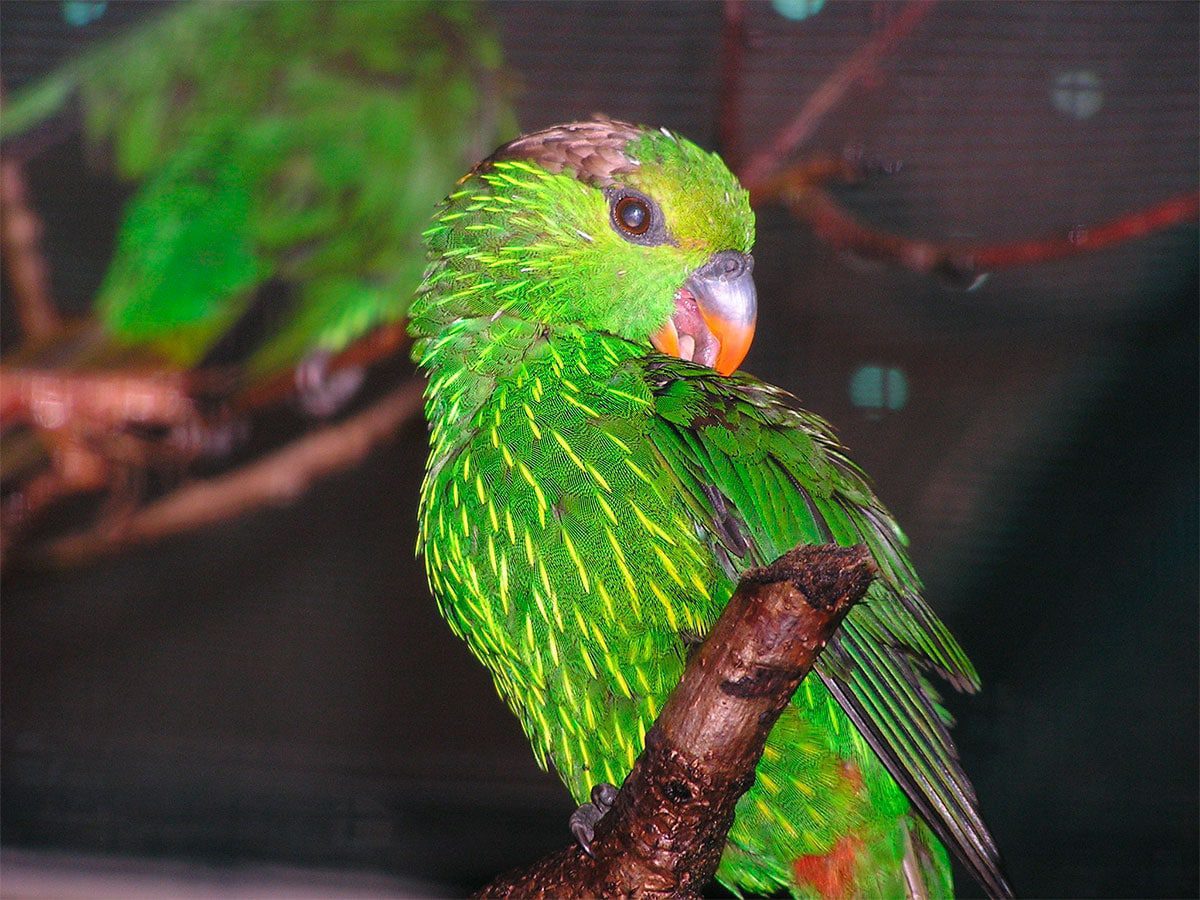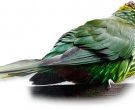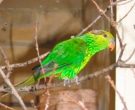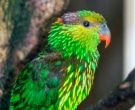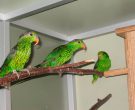Content |
|---|
Description
They weigh around 40 to 50 g. and length of 18 cm..
The plumage of the Striated Lorikeet (Charmosyna multistriata) It is predominantly green with yellow stripes on the belly and in the chest.
The throat, the forecrown and sides of the head They are slightly more yellow. The neck and the back of the head They are brown with some orange yellow stripes. The tail is olive green on top and having a tip dark yellow. The bottom of the tail It is greenish yellow with some red feathers around the vent. The most characteristic feature of Striated Lorikeet is the bill two colors. Upper bill is blue-gray with a touch of red orange, While the bottom is completely reddish-orange. Only one other Lori with a peak of two colors and that is the Musk Lorikeet. The irises It is red and legs They are gray with black nails.
Both sexes are the same color, the male is slightly larger and has a bill longer. They are also a little colored in the head.
The immature They have the same colors as adults, only the bill it is more black and darker stripes.
Habitat:
It inhabits in the mountains and hills and forest edges. Mainly found between 180 and 1.800 m, but they have been at much lower altitude, about 80 m. Found in pairs or in small groups of up 20 birds, sometimes fellowship with the Red-flanked Lorikeet and the Fairy Lorikeet (observed in mid-February in mixed flocks with these species). similar to the behavior Red-flanked Lorikeet, the consorts, but although they have observed flocks Striated Lorikeet fly with the Red-flanked Lorikeet, they usually form discrete individual groups.
Reproduction:
Habits of nesting and breeding unknown.
Food:
Prefer treetops in bloom where it feeds on pollen and nectar, but they may also feed on epiphytes.
Distribution:
Size of the area of distribution (reproduction / resident) 170,000 km2
Endemic to the montane forests of the center of West Papua New and Papua New Guinea, South of the cordillera central. The world population It is believed to be of less than 10.000 specimens, but it is probably stable. A small number in captivity.
Conservation:
• Current IUCN Red List category: Near threatened
• Population trend: Decreasing
Its habitat is locally threatened by logging and clearing for agriculture. Reports of the species in Ok Tedi They show that the population of the Striated Lorikeet has fallen dramatically after the severe drought in 1997-1998 (P. Gregory in litt., 2010).
The species may be threatened by the presence of a large copper and gold open pit mine in Ok Tedi, but the impacts of this mine are currently unknown. It is likely to be tolerant of uneven and degraded forests and although it may have a small population in general, do not believe that it is declining very rapidly.
"Striated Lorikeet" in captivity:
In aviculture the Striated Lorikeet It has become one of the rarest species. These birds have not been imported in large quantities, and many of the birds that survived the journey later died due to infections by fungi and other diseases. Few breeders were able to raise them on a regular basis.
Alternative names:
– Striated Lorikeet, Streaked Lorikeet, Yellow Streaked Lory, Yellow-streaked Lorikeet (ingles).
– Lori strié (French).
– Streifenlori (German).
– Lori Estriado (español).
scientific classification:
– Order: Psittaciformes
– Family: Psittaculidae
– Genus: Charmosyna
– Scientific name: Charmosyna multistriata
– Citation: (Rothschild, 1911)
– Protonimo: Charmosynopsis multistriata
Images “Striated Lorikeet”:
————————————————————————————————
“Striated Lorikeet” (Charmosyna multistriata)
Sources:
– Avibase
– Parrots of the World – Forshaw Joseph M
– Parrots A Guide to the Parrots of the World – Tony Juniper & Mike Parr
– Birdlife
– loryclub
– Photos:
1 – Author: Jaroslav Chloupek – biolib.cz
2 – by DavyVanthuyne’s Bucket
3 – Birds-pet-wallpapers – link
4 – Author iggino – lynx
5 – tierportraet.ch – link
